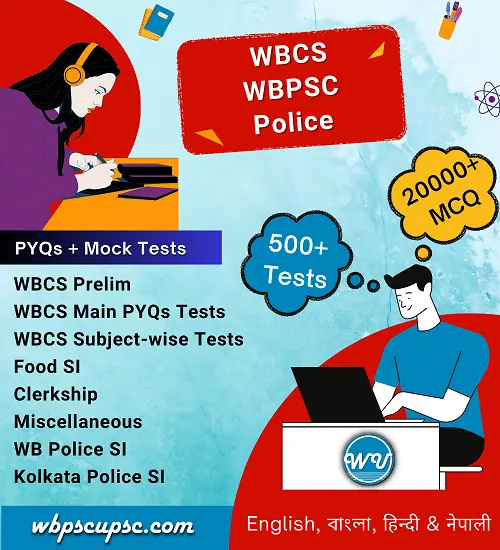March 10, 2019
Pala Empire & Kaivarta Revolt
Contents
pala empire Dharmapala Kaivarta revolt vikramshila university founded by
- The Pala Empire was an imperial power during the Late Classical period on the Indian subcontinent, which originated in the region of Bengal.
- It is named after its ruling dynasty, whose rulers bore names ending with the suffix of Pala (“protector” in Sanskrit).
- They were followers of the Mahayana and Tantric schools of Buddhism.
- The empire was founded with the election of Gopala as the emperor of Gauda in 750 CE.
- The Pala dynasty stronghold was located in Bengal and Bihar, which included the major cities of Vikrampura, Pataliputra, Gauda, Monghyr, Somapura, Ramvati (Varendra), Tamralipta and Jaggadala.
>>>>>>>
>>>>>>>
Rulers of Pala Empire
Gopala (750 – 770)
- Gopala was the first Pala king and founder of the dynasty.
- According to the Khalimpur copper plate inscription, Gopala was son of Vapyata, was probably a military officer in the Gaud Kingdom.
- Gopala was elected by a group of people.
- At the time of his death, Pala kingdom included Bengal and most of Bihar.
- He built the monastery at Odantapuri, Bihar.
- Gopala is considered as the 1st Buddhist king of Bengal.
>>>>>>>
>>>>>>>
Dharmapala (770 – 810)
- Son and successor of Gopala.
- Dharmapala founded the Vikramshila University at Bhagalpur, Bihar.
- He founded Somapura Mahavihara, Bangladesh.
- Dharmapala had frequent wars with the Pratiharas and the Rashtrakutas.
- The Palas became the most powerful kingdom in northern and eastern India during his rule.
- According to Khalimpur copper plate,Dharmapala defeated Indraraja, the ruler of Kanauj, a vassal of Gurjara-Pratiharas.
- He handed over the throne of Kanauj to his own nominee Charkayudha.
- Haribhadra, buddhist author was at the court of Dharmapala.
- Khalimpur copper plate was inscribed by Tatata.
>>>>>>>
>>>>>>>
Devapala (810 – 850)
- Son of Dharmapala and Rannadevi, a Rashtrakuta princess.
- Extended the kingdom to Assam, Odisha and Kamarupa.
- Was a staunch Buddhist and built many monasteries and temples in Magadha.
- Buddhist poet Vajradatta who composed Lokesvarashataka, was in Devapala’s court.
- Defeated the Rashtrakuta ruler Amoghavarsha.
>>>>>>>
>>>>>>>
Mahipala I
- Recovered northern and eastern Bengal.
- He appointed Atish Dipankar as the chancellor of the Vikramshila
>>>>>>>
>>>>>>>
Ramapala (1077-1120)
- The last strong Pala king.
- He founded Jagaddala Mahavihara, Bangladesh.
- The kingdom disintegrated during his son Kumarapala’s reign.
- Sandhyakar Nandi wrote the epic poem Ramacharitam.
>>>>>>>
>>>>>>>
Madanapala (1144 – 62)
- The last Pala king.
- After him, the Sena dynasty replaced the Palas.
>>>>>>>

>>>>>>>
>>>>>>>
Legacy of the Pala Dynasty
- The Pala period is also known as a ‘Golden Era’ in Bengali history.
- They also patronised Buddhist centres of learning like Nalanda University and the Vikramshila University.
- The first Bengali literary work Charyapada is attributed to this period.
- Balaputradeva, the Sailendra king of Java sent an ambassador to Devapala.
- Many Buddhist teachers from the Pala kingdom travelled to Southeast Asia to spread the faith.
- Atisha preached in Sumatra and Tibet.
- Sanskrit scholars were also patronised by the Pala kings.
- Gaudapada composed Agama Shastra during the time of the Palas.
>>>>>>>
>>>>>>>
Pala Empire Accounts
- Ramacharita, a Sanskrit work by Abhinanda (9th century)
- Ramacharitam, a Sanskrit epic by Sandhyakar Nandi (12th century)
- Subhasita Ratnakosa, a Sanskrit compilation by Vidyakara (towards the end of the Pala rule)
- Silsiltut-Tauarikh by the Arab merchant Suleiman (951 CE), who referred to the Pala kingdom as Ruhmi or Rahma
>>>>>>>
pala empire Dharmapala Kaivarta revolt vikramshila university founded by
>>>>>>>
Kaivarta Revolt
- The Varendra rebellion also known as the Kaivarta revolt.
- The revolt was against King Mahipala II led by Divya.
- It is known as not only the 1st successful rebellion of Bengal but also of Indian Subcontinent.
- The Kaivarta were able to capture Varendra region by this rebellion.
- It is said that the rebellion took place from 1075 to 1082 in the reign of Mahipala II and Rampala II.
- In 1082, King Rampala was succeeded to recapture his fatherland Varendra by defeating Vim with the assistance of neighbouring vassals.
- Thus, the first revolt of rebellious Kaibarta came to an end.
- The Kaivartas were mainly aboriginal fishermen tribal communities.
- They earned their livelihood by fishing from their ancestor.
- But as the Pala emperors were non-violent in their religious beliefs, they were against of eating fish and meat.
- So, they always tried to discourage Kaivartas from catching fishes.
- As a result, the Kaivartas were abused by the Pala emperors.
- Besides, King Mahipala II arrested his two brothers Shurapala II and Rampala II in the time of ascending the throne.
- As a result, some vassals of the two arrested brothers also took part in the rebellion.
- Pala employee Divya called for revolution.
- Kaivartas responded on his call and the rebels were easily able to capture the Varendra region.
- As the Kaivartas were very expert in boating, they capitalized on naval war.
- Mahipala II was killed by the rebels and the Pala armies were forced to fall back.
- As a result, Varendra was declared a separate state by Divya.
- After the death of Divya, first Divya’s brother Ruddoka and then Ruddoka’s son Vima were declared king of Varendra.
- Vima established himself as a successful and expert ruler.
- He made the war-torn Varendra prosper.
- The Kaivarta pillar is still standing in Dinajpur of Bangladesh as a sign of the dynasty.
>>>>>>


